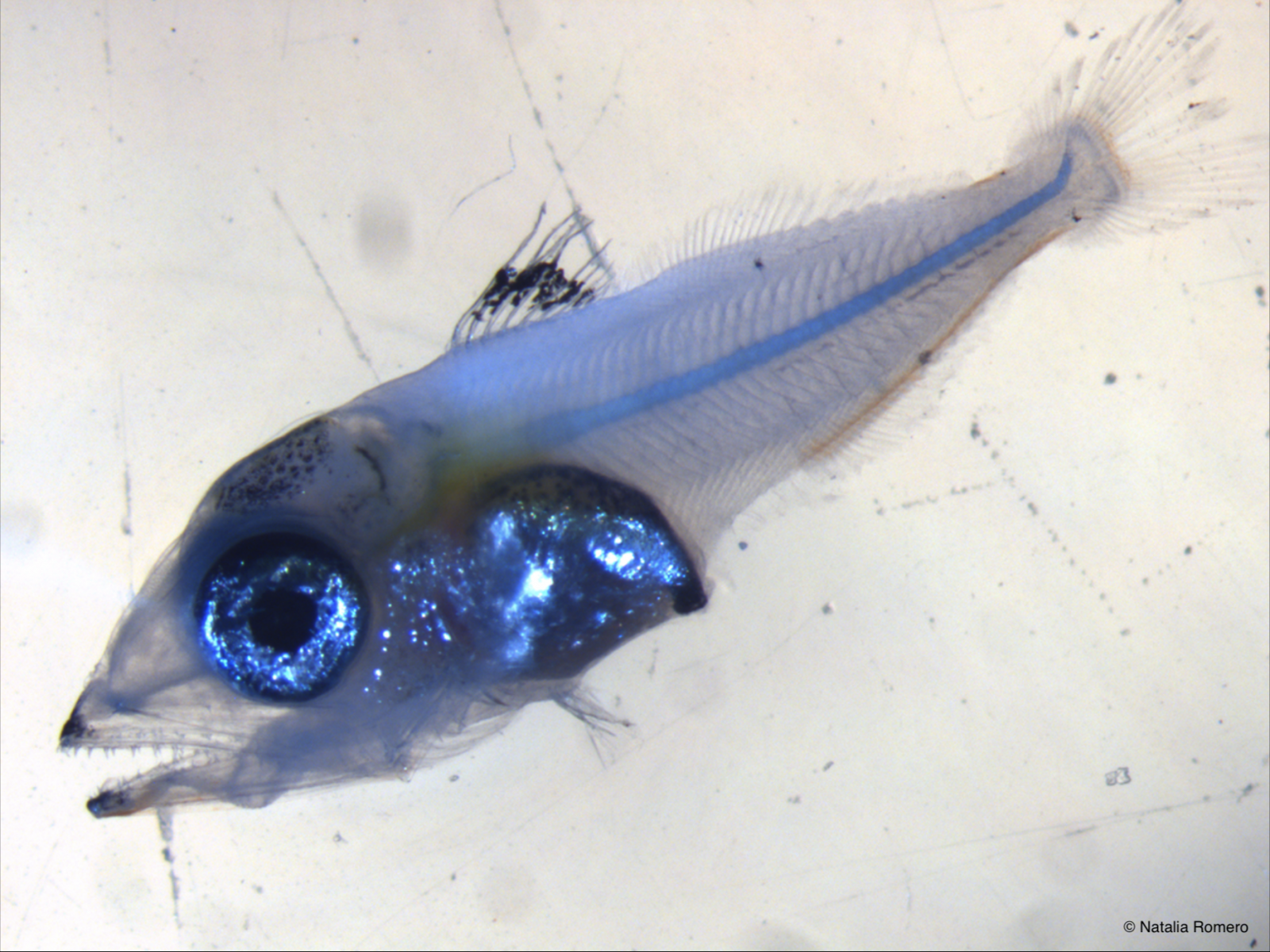The maternal inheritance, key to the survival of bluefin tuna Larvae.
By Ricardo Borrego-Santos and collaborators.
 The Atlantic bluefin tuna (Thunnus thynnus) is one of the largest species in the tuna group, known for its high swimming capacity and ability to regulate its internal temperature, which allows it to make long migrations between colder regions in search of food and warmer areas to spawn. The global population of this species is mainly divided into two large groups, separated by biological differences (such as reproductive age and size) and their spawning grounds, which are located in the Mediterranean Sea and the Gulf of Mexico. Despite its commercial value, there is little research on its ecology during the early stages of development. The larval stage is the most critical, with extremely high mortality rates, where only 0.01% of larvae survive to reach the juvenile stage. The survival of larvae is closely linked to their growth, as larger larvae are better able to escape predators and capture prey that provides more nutrition, thus shortening this crucial period. Growth in fish is characterized by being inconsistent, varying according to environmental conditions such as temperature and food availability, as well as their genetic inheritance. In turn, the size and quality of eggs are essential aspects that depend on the inheritance transmitted by the mothers and directly influence the initial development and growth potential of the larvae.
The Atlantic bluefin tuna (Thunnus thynnus) is one of the largest species in the tuna group, known for its high swimming capacity and ability to regulate its internal temperature, which allows it to make long migrations between colder regions in search of food and warmer areas to spawn. The global population of this species is mainly divided into two large groups, separated by biological differences (such as reproductive age and size) and their spawning grounds, which are located in the Mediterranean Sea and the Gulf of Mexico. Despite its commercial value, there is little research on its ecology during the early stages of development. The larval stage is the most critical, with extremely high mortality rates, where only 0.01% of larvae survive to reach the juvenile stage. The survival of larvae is closely linked to their growth, as larger larvae are better able to escape predators and capture prey that provides more nutrition, thus shortening this crucial period. Growth in fish is characterized by being inconsistent, varying according to environmental conditions such as temperature and food availability, as well as their genetic inheritance. In turn, the size and quality of eggs are essential aspects that depend on the inheritance transmitted by the mothers and directly influence the initial development and growth potential of the larvae. In this study, we examine the growth of bluefin tuna larvae in the Gulf of Mexico in relation to maternal inheritance, environmental conditions, and food availability over two consecutive years, 2017 and 2018. The research, based on stable isotopes, revealed the influence of reproductive females on larval growth, showing that the isotopic composition of larvae during their early days reflects the diet of their mothers. Our findings highlight the importance of maternal nutrition and physical condition in the quality of eggs and larval growth.
On the other hand, exposure to higher temperatures and greater abundances of zooplankton (their main food source) promoted increased growth in both size and weight of the larvae in 2018. The higher quantity and diversity of zooplankton facilitated access to preferred prey, such as copepods and cladocerans, suggesting that a food-rich environment may be crucial for optimal development.
In summary, the study provided insights into the importance of maternal inheritance and how annual variations in environmental conditions influence the larval development of this species in the Gulf of Mexico, a key area for its reproduction. Studying and understanding the biology of this commercially valuable species from its early developmental stages is crucial for understanding the population dynamics of bluefin tunas and for implementing future management and conservation actions.
Read the full study here:
Quintanilla, J.M.; Borrego-Santos, R.; Malca, E.; Swalethorp, R.; Landry, M.R.; Gerard, T.; Lamkin, J.; García, A.; Laiz-Carrión, R. (2024) Maternal Effects and Trophodynamics Drive Interannual Larval Growth Variability of Atlantic Bluefin Tuna (Thunnus thynnus) from the Gulf of Mexico. Animals, 14, 1319. https://doi.org/10.3390/ani14091319
Text written by Ricardo Borrego-Santos and edited by Clara Ruiz and Félix Picazo.
